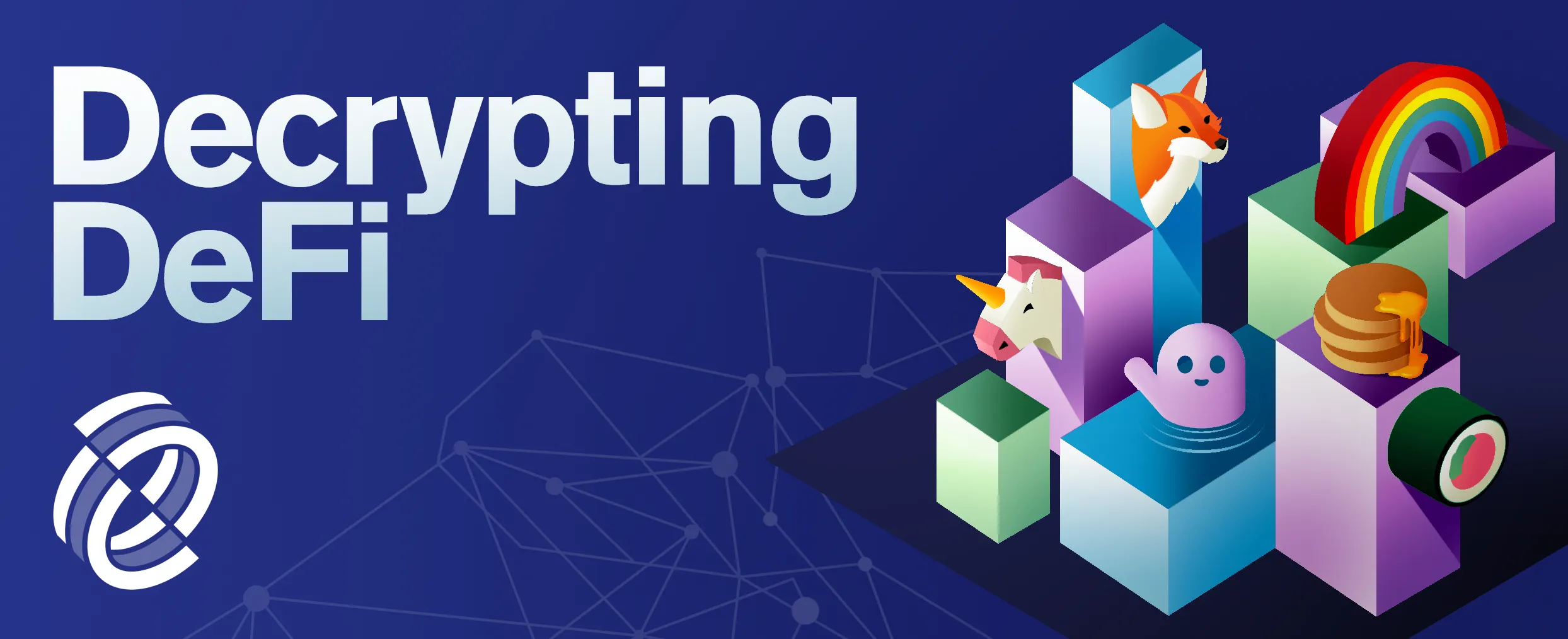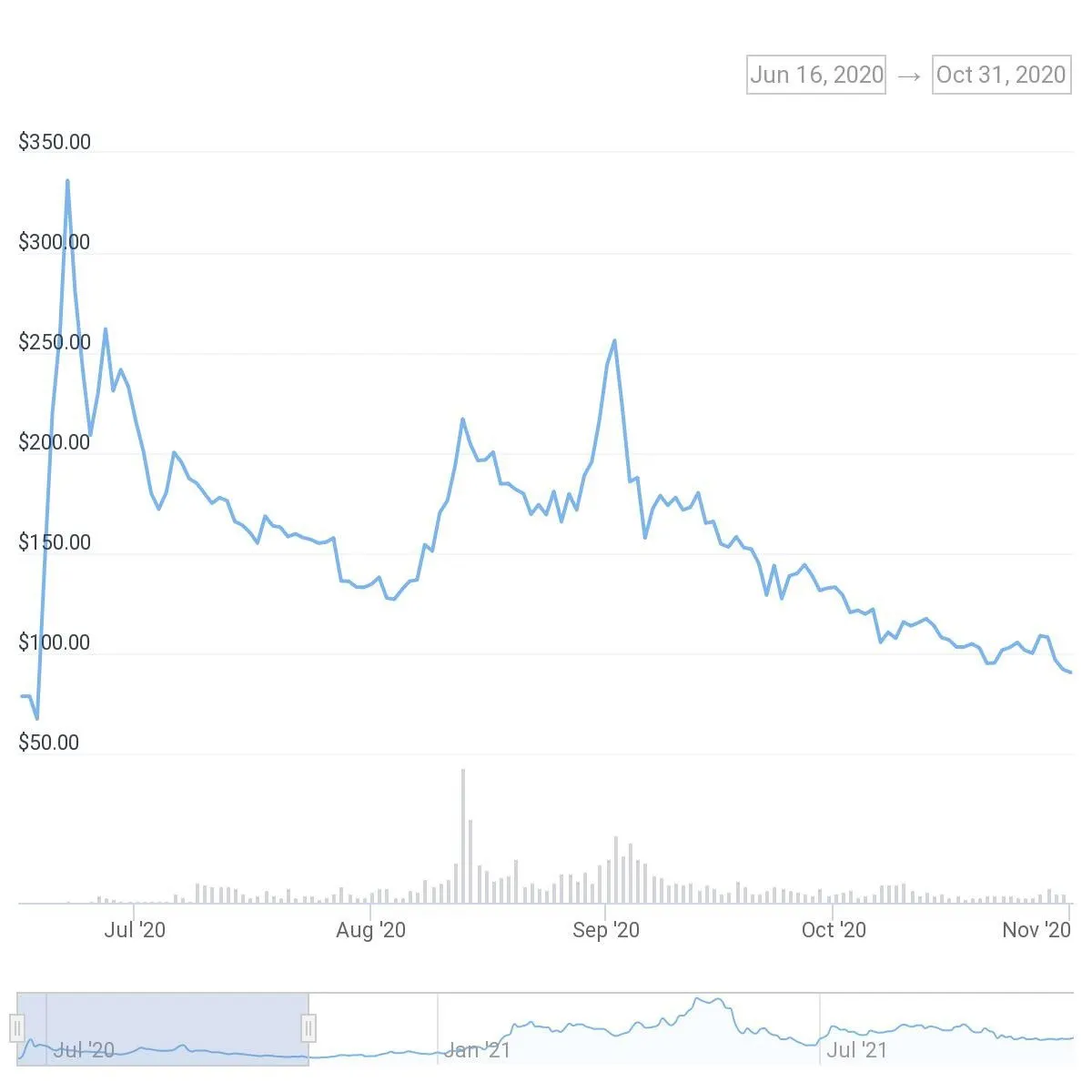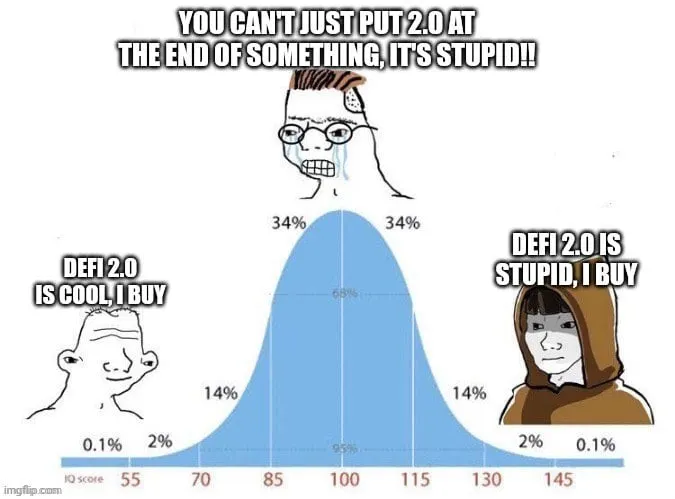
Over the past few weeks, you may have begun to see the term “DeFi 2.0” appear on Crypto Twitter. I also mentioned it in last week’s DeFi Friday newsletter along with two DeFi projects, Olympus and Alchemix, that appear to fall into this category.
But what is DeFi 2.0?
Like most things in crypto, it’s become a meme. Like most memes in crypto, it's meant to (1) spread awareness about a shiny new idea and also (2) pump the tokens attached to those shiny new ideas. Naturally, all of these memes should be taken with a grain of salt. But this one isn’t just a joke.
The most generous interpretation of DeFi 2.0 that I can give is that it refers to the second-generation of DeFi protocols. If we think of Compound and Maker as original blend DeFi, this next wave of projects is the macchiato. Though there are ingredients that are familiar, there are also some others that are supposed to be totally new.
Some examples include OlympusDAO, Alchemix, Ribbon Finance, Tokemak, and likely a few others.
The lack of clear definition around these memes, however, means that the list could potentially be endless. This is a feature rather than a bug. As the Twitterati fight over what belongs (or doesn’t) under the DeFi 2.0 umbrella, the meme’s velocity increases, spreading like wildfire.
Memetics aside, I do have at least one helpful way to think about DeFi 2.0’s whatness. To understand this, however, means going back to the initial yield farming experiments and what they were supposed to do for protocols.
Though Compound has sometimes been credited with inventing yield farming, IDEX was technically the first project to do this back in 2017. But for the sake of our short memories, let’s stick with Compound’s event.
The project launched its governance token, COMP, then distributed it for free to anyone who used its lending and borrowing services. Basically, users could drop any token that the platform supported into Compound to earn the base 2%, plus an extra percentage in COMP tokens during the yield farming event.
This scheme created a lot of odd behaviors for both users and projects.
First and foremost, it became difficult to determine if someone was using Compound for its excellent services (die-hard users) or if they had deposited money just so that they could gather that Compound token to inevitably flip for a profit (mercenary users).
You have to remember that at the peak of the COMP launch in June 2020, the token went absolutely nuts. The incentive was high to dump the coin; it was free money after all.

Obviously, Compound would prefer more die-hard users than mercenaries, but the structure of the token distribution certainly offered quite a bait for those looking to make a quick buck.
Though lucrative over the short-term, mercenary farming has become an accepted downside for many projects. Like a sugar high, a project’s total value locked (TVL) can quickly become inflated. As a founding member of a team, it’s tempting to see this inflation as real success too.
This leads to the second odd behavior. As projects attempt to cater to this mercenary farming (and inflate TVL), they may routinely promote token incentives to keep the music going. After all, venture capitalists and hedge funds are all eagerly waiting to pour funds into the next big Web 3 project.
But as soon as those incentives dry up, then all that capital (and triple-digital yield) spills out. The music stops, and the party’s over.
In these moments, not only are the slowest farmers to the exit hurt, but so are the die-hards who may genuinely believe in the project.
This is why Scoopy Trooples, the creator of Alchemix, calls liquidity mining (aka yield farming) “a drug.” And finding an alternative to this scheme is how many people are establishing a framework for what is and what isn’t DeFi 2.0.
DeFi 2.0 projects are exploring new ways to balance incentives that generate crucial liquidity for a project, without the whipsaw valleys and peaks of most yield-farming schemes. Though mercenary farming is inevitable, the promise of DeFi 2.0 projects is that they seek to limit their harmful effects on the die-hard users.
But like I mentioned above, for now, it’s just a meme. And with every meme comes bag holders and token shills.

Take it all with a grain of salt, as usual.
Decrypting DeFi is our weekly DeFi newsletter, always led by this essay. Subscribers to our emails get to read the essay first, the day before it goes on our site. Subscribe here.

